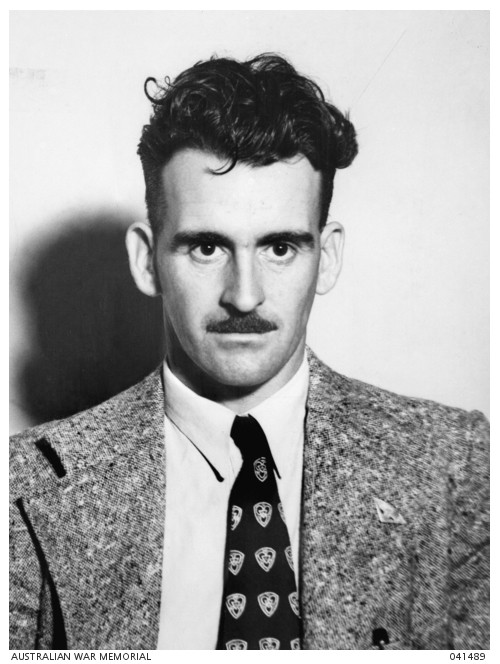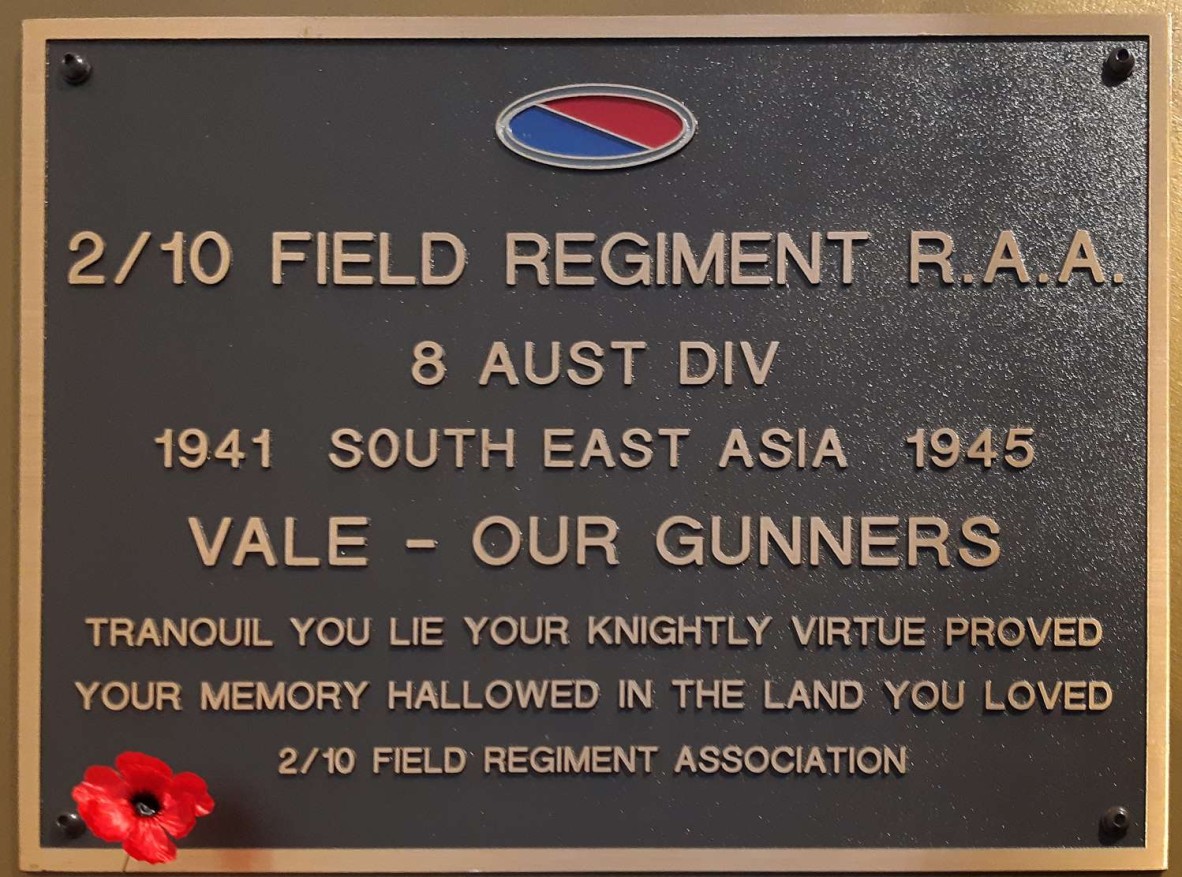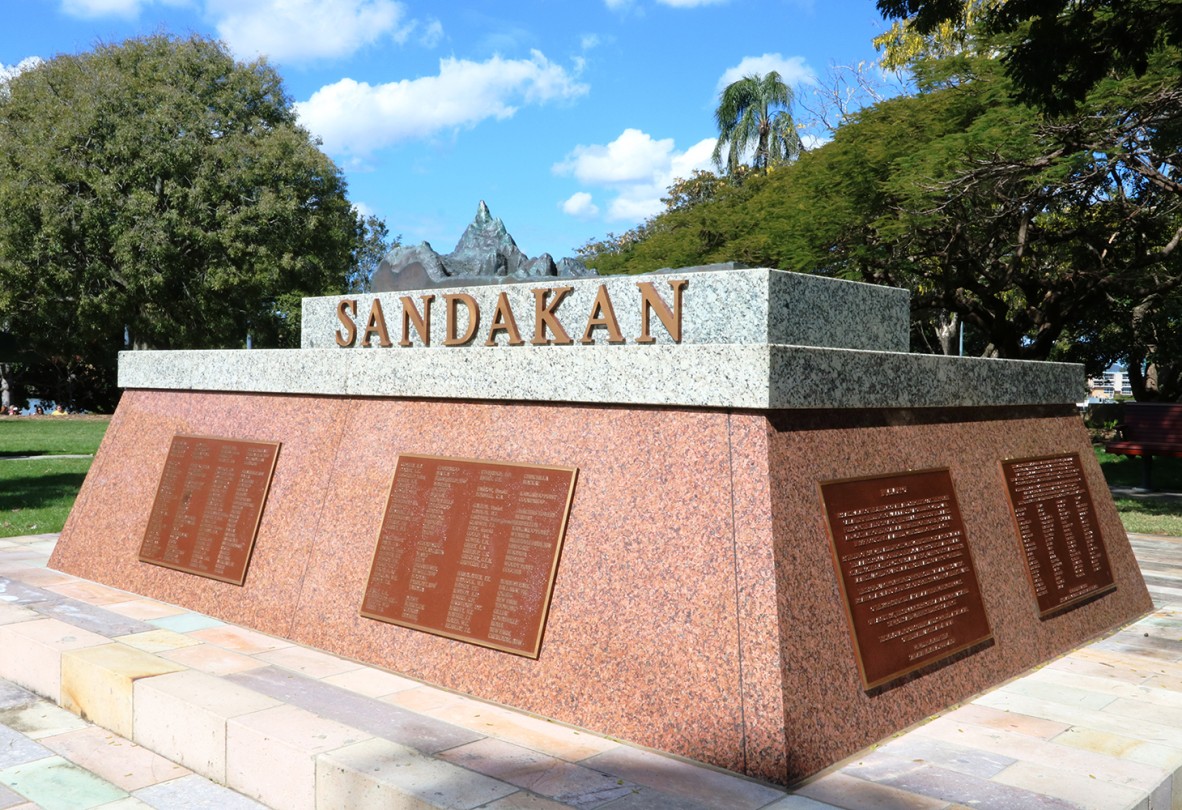POWs in the Pacific: Remembering Sandakan
By Elise Weightman, Visitor Services Assistant, Anzac Square | 9 November 2020
Among the 140,000 Allied service personnel taken as prisoners of war (POWs) in the War in the Pacific in World War II (WWII), almost 1,800 Australians and 650 British were unlucky enough to be sent to the Sandakan camp on Borneo. This included Owen Campbell, who was a 24 year old labourer from West End in Brisbane when he enlisted in the AIF in 1940.

Owen Campbell, courtesy AWM 041489.
After initial training, Campbell joined the 2/10 Field Regiment as a gunner and was deployed with 8th Division to the Pacific theatre in 1941. Having spent months defending the Malay peninsula against the invading Japanese forces, Campbell and his unit formed part of the last line of the Allied defence on Singapore in February 1942. That month, finally overwhelmed by the Japanese Imperial Guard, the Allies surrendered on Singapore and Campbell became a POW, one of 50,000 Allied POWs to march into the Changi prison compound in a week.

The memorial plaque for 2/10 Field Regiment, from the WWII Memorial Gallery at Anzac Square.
In March 1943, Campbell was transferred, with hundreds of other POWs, to Sandakan on the north coast of Borneo, where work was underway to build an airstrip for the Japanese. Although forced to provide hard labour and endure floggings, prisoners at Sandakan initially found conditions adequate, with enough shelter and food to survive. However, after some POWs attempted to escape and then were found to be hiding a radio, harsh punishments and restrictions were introduced. As the war progressed, the Japanese and Formosan guards increasingly asserted control by inflicting torture on the POWs, like the use of a cramped “cage” in which prisoners were forced to crouch for days or weeks or longer, exposed beneath blazing hot sun. Food, water, medical treatment and Red Cross supplies were also deliberately withheld, and malnutrition and disease became widespread among the POWs.
The Sandakan airfield constructed by the POWs was targeted and eventually destroyed by repeated Allied bombings in late 1944 (finally knocked out of action on Christmas Day) and after that, with the tide of the war turning against them, the Japanese resolved to retreat from Sandakan and move inland to Ranau. The fittest of the POWs were to march with them, probably to be used as labour.
In the months to May 1945, there were three groups of POWs, many emaciated and ill, that embarked on the difficult 265km trek inland. It was during this period of the “death marches”, as they came to be known, that brutalities at Sandakan climaxed. Those who could not keep up during the trek were executed en route while those left behind were effectively abandoned to their fate; (whether the Japanese expected they would die from exposure and illness or be rescued by advancing Allied forces is unclear; later, some were shot). For those who made it to Ranau, the outcome was no better, and in the end, virtually all of the 2,500 Australian and British prisoners from Sandakan had been murdered or perished by the end of the war (some, sadly, even in the days after the Japanese surrender). Just six Australian men, including Owen Campbell, managed to escape the marches and defy the odds to survive their unfathomable ordeals.
After the war, Campbell related his dreadful experiences at Sandakan and as an escapee from a death march, and he provided an eyewitness account of the mass murders of many fellow POWs. (You can view Campbell’s testimony via his service record at the National Archives of Australia). The burden of surviving and bearing witness exacted a toll on Campbell and those others who eluded death on Borneo, but the fact is, had they not survived to tell their stories, it is possible the atrocities committed on Sandakan may never have been fully revealed. And their testimonies, which were recounted in news articles and used to prosecute war crimes, enabled more than the exacting of retribution and outcries of sympathy and anger. Via meticulous investigations in the years after the war, including the work of the Commonwealth War Graves Commission, the survivors’ accounts assisted the eventual documentation and recovery of the remains of many of those who perished on Sandakan, ensuring their experiences were acknowledged and many were finally laid to rest.
On the 50th anniversary of the end of WWII, in 1995, a memorial in New Farm Park in Brisbane was unveiled as a tribute to all those Queenslanders held POW at Sandakan, with their names listed, including names that may have remained unknown without the information provided by survivors like Owen Campbell and the work of the CWGC and other contributors in the decades that followed.

Sandakan Memorial, New Farm Park, courtesy Anzac Square Memorial Galleries.
This year, we mark another significant milestone: the 75th anniversary of the end of WWII and also of the events at Sandakan. With the passage of time, those who lived through the Death Marches, including Owen Campbell, have now passed away and bequeathed to us the responsibility to remember. This Remembrance Day is an opportunity for such an act of commemoration; and for acknowledging the sacrifices made by all those who fought to ensure the events at Sandakan would not be forgotten.
If you are interested in learning more, you can explore more personal stories and the history of Queensland’s involvement in WWII at the Anzac Square Memorial Galleries or via SLQ’s online collection.
Below are links to just a few of those stories:
Audio: The Senseless Death of An Average Queenslander (Patrick James Bourne), a POW who died at Sandakan http://hdl.handle.net/10462/deriv/211107
Blog: Jack Flynn, POW and forced labourer on the Thai-Burma railway https://www.slq.qld.gov.au/blog/jack-flynn-qx17415
Blog: Alan Groom, RAF pilot, from Auchenflower in Brisbane: https://www.slq.qld.gov.au/blog/group-captain-alan-groom-dso-raf
Link: Owen Campbell’s service record at NAA: https://recordsearch.naa.gov.au/SearchNRetrieve/Interface/ViewImage.aspx?B=4851770
Comments
Your email address will not be published.
We welcome relevant, respectful comments.